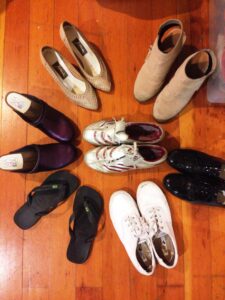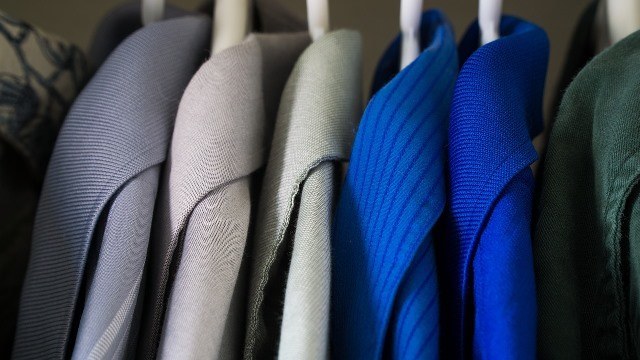Organize the Closet? I Can’t see the Closet

Try the Friends, Acquaintances, Strangers game to sort through clothes.
Recently a client and I stood in front of what was supposed to be a clothes closet in her bedroom. The door was open and the closet was full. She was desperate to have a beautifully set up, organized closet. But in fact, we couldn’t even see inside much less organize the closet or contents.
Some serious purging and sorting was needed.
Almost all of these strategies were used. Each strategy has its own merit. They each work differently for different people depending on the item in question. What works for you?
Pull Everything Out
Start by getting everything out of the closet. While this can be an almost overwhelming task, at least you will know what is in there. Get the clothes, purses, shoes, scarves and anything else out of hiding.
Use the Friends, Acquaintances, Strangers Game
Getting through the sorting of a full closet enroute to an organized closet can be daunting task. Using the friends, acquaintances, strangers game can help.
Friends are the people you would have for supper. In other words the clothes that you love, look good in, feel good in and wear often – or would wear often if you could get at them with an organized closet!
Acquaintances are the people you might chat with but aren’t very close to. Which are the items that you thought you might like but ultimately never warmed up to? Can they move on to a life outside of your front door? Off to donation?
Strangers are the people you just don’t know. Or maybe the ones you knew but don’t hang out with anymore. These are clothes that don’t fit or have gone out of style. You don’t care for them, don’t wear them. Send them away.
Re – Consider the Gifts
We all have items in our closets that were gifts. They were loved, liked or found amusing by someone that gave them to you. But maybe not quite your taste. Since they were a gift, they are yours to do as you please, right? Consider, your mother likely didn’t expect you to keep that sweater for 4o years. If you don’t wear it, love it, cherish it – send it off to someone who will.
Photograph the Cherished

Organizing shoes includes checking regularly for repairs and polish.
And then there are the items we love and don’t use; beloved items that just don’t measure up to today’s – or your – style. Take a photo. That way you have the memory without having the item take up space in your closet.
Organize the Closet
With a lighter load, its easier to hang up, fold up and generally sort everything back into the closet. Try going through the sorting process again as items go back into the closet. Sometimes a second round of sorting will lighten the load that much more.
Now stand back and survey the closet. When you open the doors you ought to be greeted with friends waiting to be taken out and worn. Items that you love, that make you feel good and that look great on you.


